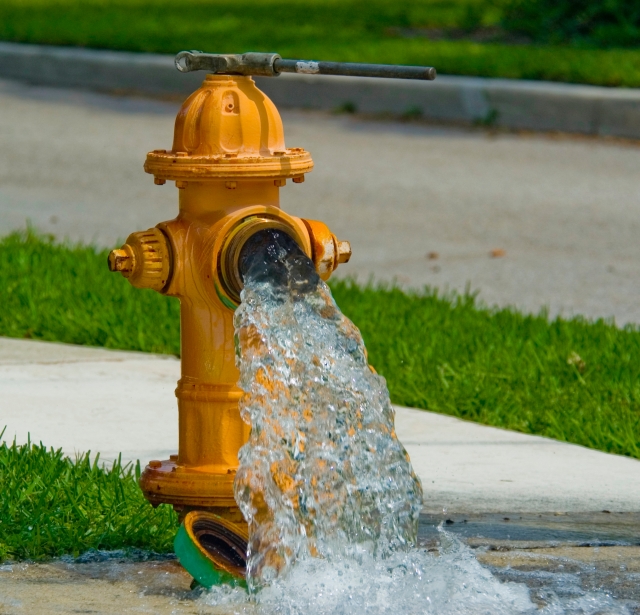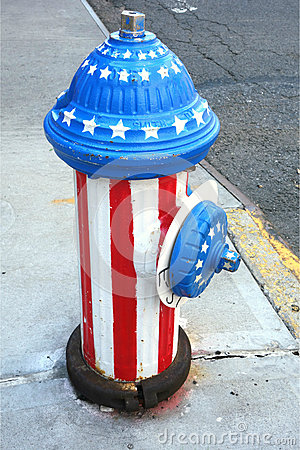
The American fire hydrant – the ‘Stubbie’
My first automobile related essay.
You have seen them in countless films, and probably parked close to one if visiting a city in the States. They sit on the sidewalk, humble though its duty is great, a silent sentinel. Universally recognisable, their existence is the difference between life and death.
They stand square shouldered to the sky, proud in bright livery, or flaking cast iron and rust. They are indispensable. They are America’s fire hydrant.
The Stubbie
Extinguishing fires swiftly was a challenge ever since neighbourhoods were built. Back when the USA was still Indian land, and buildings especially homes were essentially built of wood and stucco, hydrants didn’t exist. A fire could spread quickly, neighbours lining up to pass buckets of water to douse the flames, and when failing, standing back to watch a home burn to the ground. And in any number of instances when cars catch fire the hydrant is there to alter a burnt engine into a Category D insurance case with soggy carpets and ruined electrics.
The Chinese, always a thousand year step ahead of the inventive Scots, installed large cauldrons on their street corners. That was the same method used during America’s colonial days until cisterns were invented.
In the early 1800’s the hydrant was a simple standpipe enclosed in a wooden case. It’s generally accepted by hydrant historians – yes, they do exist – that the first was installed in Philadelphia in 1865. It was nicknamed The Stubbie, and the name stuck. The arms outstretched as if in crucifixion, that iconic design is considered the classic shape. There are millions throughout America. If Spielberg ever felt like making another spacemen movie, he can do no worse than animate Stubbies as his Martians.
A Stubbie Among Stubbies
Slim, squat, fluted, smooth, chunky, they come in a variety of styles and livery, colour the choice of the local fire department. In California they are predominately yellow or mustard. As with icebergs, the greatest part lies under the surface. Some have their top caps in a contrasting hue to tell at a glance their exact water capacity.
We’re familiar with their function, thanks to the movies, where if there’s one in the plot it is guaranteed to get hit by a car and gush water up to sixty feet in the air. In sweltering hot days in the city children uncouple the stay and play in the spray.
If there’s no hydrant near a conflagration in your street the fire department has the right to take water from your swimming pool without notice.
One famous Stubbie in New York luxuriates in the Stars an Stripes. It’s on 104th Street and Broadway, Manhattan. It’s the most photographed, a national treasure.

New York’s finest Stubbie
The Foundry’s Craft
Hydrants might look as if unsophisticated lumps of cast iron but they have exacting specifications to ensure hydraulic efficiency. They are fabricated strong and sturdy so they are easy to replicate. The correct internal bore of the pipes is critical to ensure constant pressure, and the operating nut is manufactured with short threads so a hose can be connected with only a few turns, preferably no more than three – hence the nut is easy for kids to undo and without a spanner. The race is on to invent an easy off, child proof cap.
For Anoraks
The pressure they hold back for their emergency use is an average of 60psi, flowing about 1295 gpm, (global precipitation measurement) the water forced through a 2.5 inch nozzle. In Los Angeles they are place 200 feet apart and no more than 500 feet from the building they are designated to protect. (I’m pleased to add the USA is happy to retain feet and inches, but mystified by ‘stones’ as a measurement of weight.)
Built to withstand extreme high temperatures – San Diego can rise to 120 in the shade – the traditional hydrant is under threat in far northern cities such as Chicago where the ground can freeze hard and deep. There they are gradually being replaced by flush, underground appliances that won’t ice-up in Arctic conditions.
They are collector’s items, the older, scarcer much prized. Prices of the earliest design are high at auctions. Some people have a collection of them in their garden, while others photograph as many as they come across.
“Myrtle! Look! A Series 2500 Ductile! I gotta take a picture.”

Park across a hydrant and this is what can happen
Pedants and pesterers
Obsessive pedants and firemen too send letters to movie studios chiding producers for placing the wrong period hydrant in a scene.
You must never park in front of a hydrant. Locals know the rule. That gap in the line of parked cars you are delighted to spot, and aim for before another driver grabs it, is left free because the fire engine parks there. By law. Ignore the red line and you won’t get fined. You’ll get you car towed away to the Pound plus a humungous fine.
A friend in need
As street furniture the hydrant is more important than the lamppost or the traffic light. Their dignity remains intact in all weathers, rock solid, a friend in need, in all situations.
They’re stoic, never phased when drenched in canine urine, H20 on the inside, K9p on the outside. They stand as a document page in the history of the white man’s expansion, his culture, a quiet friend, as familiar as hotdogs and hubcaps.
Their intention is the same as the Scottish Government, civic service, there to protect the people, their property and possessions.
(A framed copy of this essay was gifted to LA’s Marina del Rey fire station.)

A ‘Mario’ fire hydrant

Another enjoyable essay to read, on an unexpected subject.